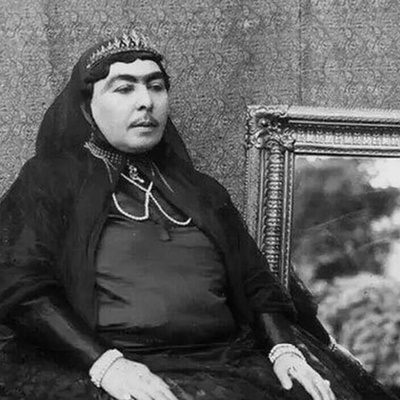**Zanburak**, also known as the **Jew’s harp**, is an ancient instrument with a seemingly simple structure. Archaeologists say that the instrument dates back to the 4th century AD, although its exact origin is unknown. In this part of Saeed News, we introduce the Zanburak instrument.

Zanburak, also known as the Jew’s Harp, is one of the oldest musical instruments in the world. It is a metal or wooden instrument with a horseshoe-shaped frame and a tongue (reed) attached at one end to the middle of the curve.
Zanburak is a type of lamellophone in the family of idiophones played with the mouth. It consists of a flexible metal or bamboo reed mounted on a frame. The player places the instrument in their mouth and sets the reed vibrating with a finger, producing musical notes. The player holds the frame between their teeth, and their mouth and jaw act as a resonator to amplify the sound.
This instrument appears in many different cultures and has at least 40 different names in various languages. Zanburak is often associated with magic and shamanic rituals due to its hypnotic and trance-like vibrating sound.
Zanburak was widely used among French and English colonists and soldiers due to its low cost, small size, and ease of play. It was commonly used to entertain soldiers in camps and military posts.
Although it was mainly used for amusement and enjoyed by common people, it was occasionally featured in more formal music. Johann Albrechtsberger, an Austrian composer known as one of Beethoven’s teachers, wrote several orchestral pieces for the Jew’s harp in the late 1760s.
Around 50 years ago, about 172 Zanburaks and their parts were discovered during excavations in Michilimackinac. In the 18th century, European Jew’s harps appeared in various shapes, including round-headed and triangular designs. Among them, round-headed brass harps were the most commonly used, but a variety of other materials and shapes were also found. For example, eight jaw harps were discovered in a merchant’s house, including three so small that only a child could use them.

From the beginning, Zanburaks have been made from wood, metal, bone, and other naturally available materials. The instrument features a flexible tongue (reed) attached to a pear-shaped frame. This frame forms a resonance chamber that the player places in their mouth. The reed is activated either by plucking with the fingers or by striking the end of the frame.
The notes produced by the Zanburak are usually between four and ten harmonic tones. Each reed can produce only one fundamental pitch. In the 18th century, advanced players used multiple Zanburaks with different pitches to cover full musical scales.
Hand position: If you're right-handed, hold the instrument with your left hand, and vice versa. Form a "C" shape with your thumb and index finger to grasp the frame of the instrument securely.
Orientation: Ensure that the trigger (the part sticking out from the reed) is not facing you. If the frame is too wide, use your middle finger along with the thumb and index finger for a firm grip.
Mouth placement: Open your mouth slightly and place the arms of the Zanburak against your teeth. Do not place the curved edge over your teeth—just rest it against them.
Lip position: Slightly part your lips to allow the sound to resonate. The instrument must be in contact with your teeth to function properly.
Throughout history, the Zanburak has had a strong association with mystical and magical realms. At one point, playing it was banned in some countries like Russia due to its ties to shamanic practices. In these traditions, it was believed the instrument could transport the player into the spirit world. While the instrument served different purposes in the past, today it is recognized as a melodic instrument often used in folk music.
Many people today are unfamiliar with the Zanburak, and music scholars believe it has been unfairly forgotten. However, modern academic studies now offer courses and masterclasses to promote understanding and research on this ancient instrument.
The Zanburak (Jew’s Harp) is one of the world’s oldest musical instruments, with a metal or wooden horseshoe-shaped frame and a reed attached to the center curve. It exists in many cultures and is known by at least 40 different names. Historically tied to shamanic rituals, the Zanburak is now appreciated for its unique sound and cultural richness, especially in folk music traditions.

